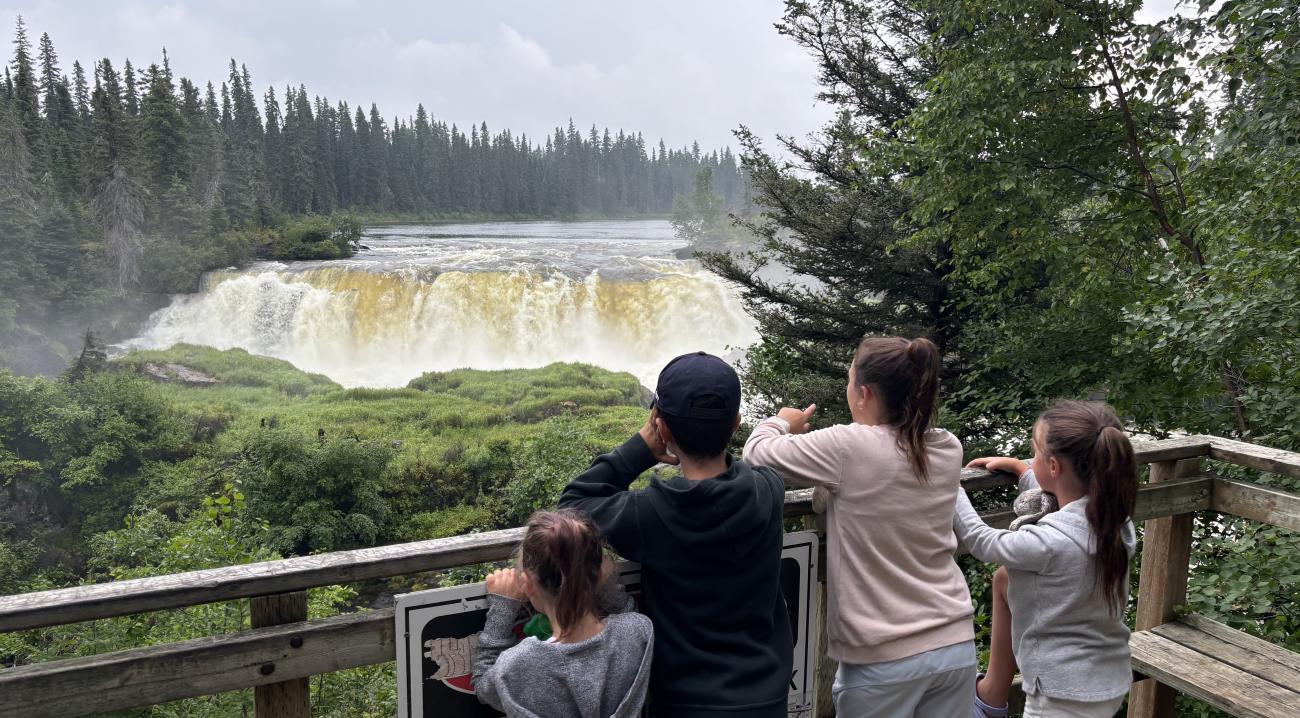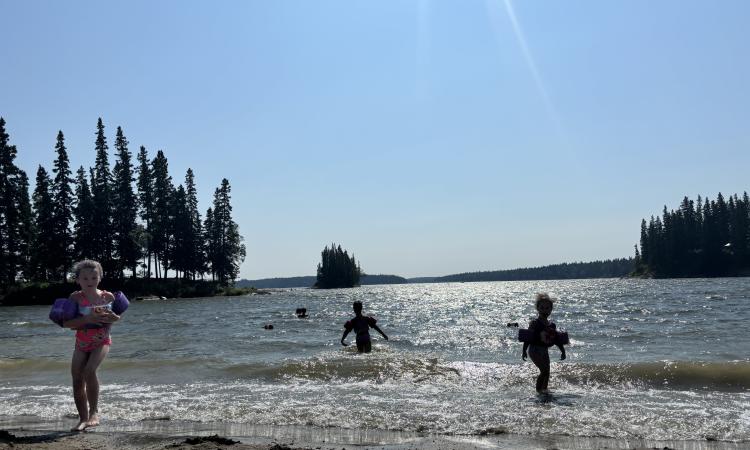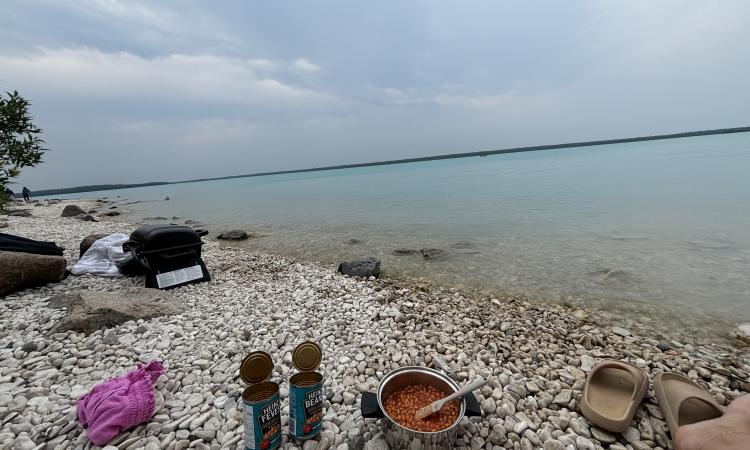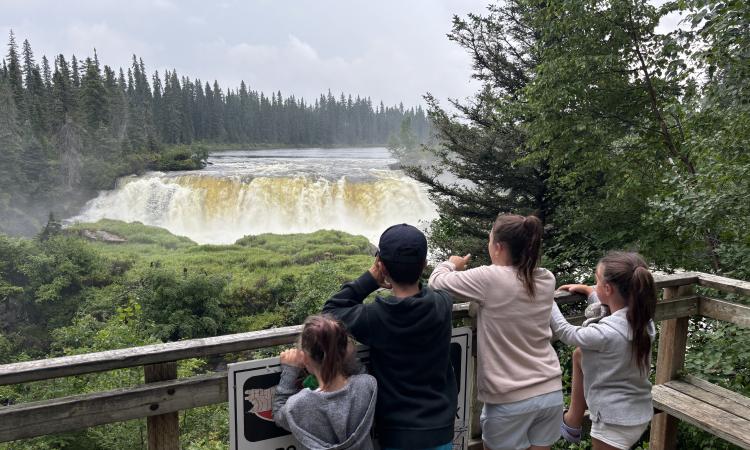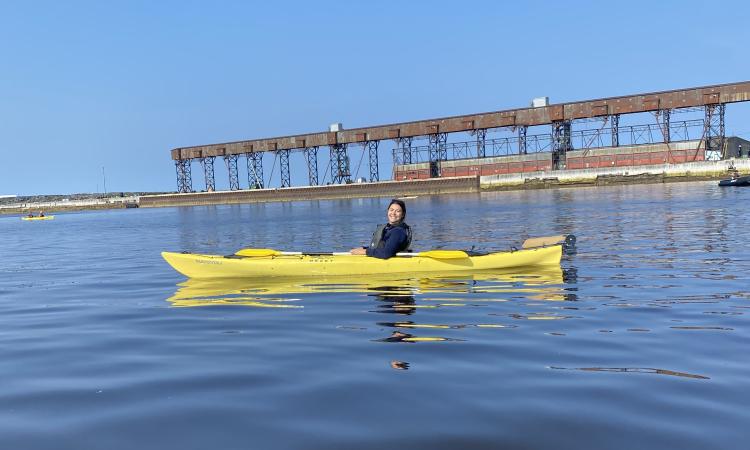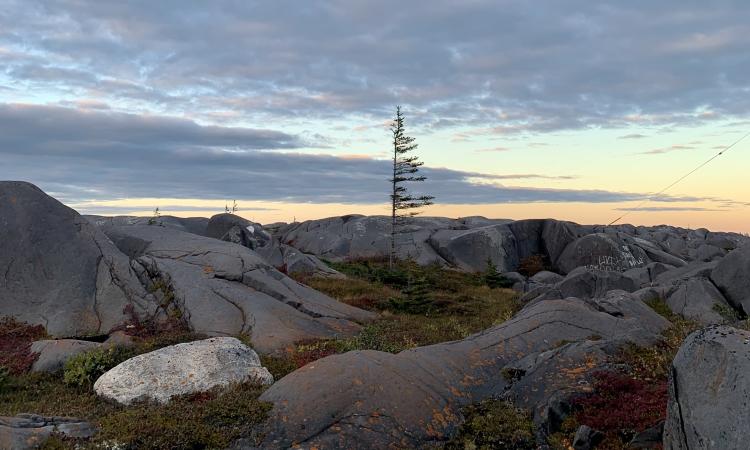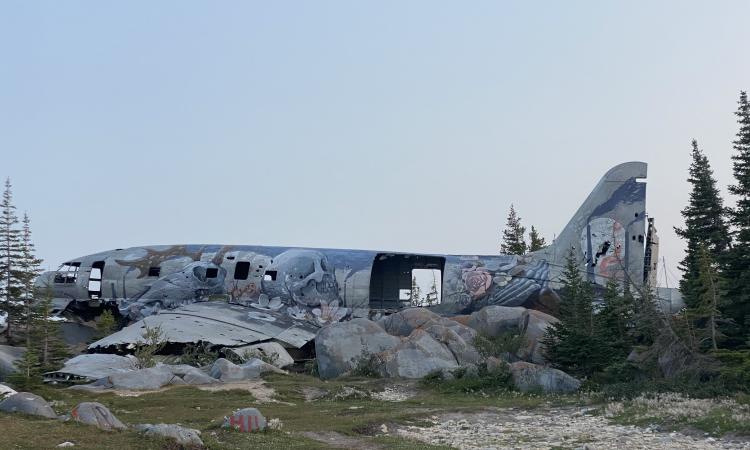Southern Manitoba is home to some of the world’s most amazing forests, parks, lakes, and hiking trails, and it’s where most outdoorsy Manitobans choose to vacation every summer.
But if you’re a little adventurous, there are vast areas north of Lake Winnipeg that offer stunning vistas and one-of-a-kind sights just waiting to be explored. Mostly, these hidden gems go underappreciated.
A pair of Niverville residents, though, have broadened their perspectives on Manitoba’s natural wonders in recent years, setting their sights on non-traditional trips around the province they call home.
Discovering Central Manitoba
In July 2024, Dawna Anderson and her husband Kyle packed their five children into the family van and headed north. Their goal? To take in as much of Manitoba’s beauty as they could on a four-day road trip.
In hindsight, they admit that it wasn’t enough time, but it gave them a taste of what central Manitoba has to offer—and they came home changed by the experience.
Anderson was inspired by an Instagram post from a Winnipeg couple who love to share about their extensive Canadian travels.
“One of their routes was out to Thompson,” Anderson says. “They shared a lot about their journey and the stops they made, so I tweaked it to fit our family.”
Anderson’s kids ranged in age from three to nine years old at the time, requiring them to factor in frequent pitstops. Their itinerary included points of interest every two hours or so.
She and her husband had a few other prerequisites. Firstly, they had a relatively tight budget, leading Anderson to pack four days’ worth of food plus a portable barbecue.
Secondly, as much as possible, they wanted to avoid crowds.
“When you think of [places like] West Edmonton mall, you’re going into crowds and you’re going to spend money,” Anderson says. “It was July, and we could do this road trip cheaper and see so much of our province that we typically wouldn’t otherwise see. We didn’t want this trip to be something that was rushed. If our kids were enjoying their time somewhere, we didn’t want to cut it short, so we spent two or three hours at each place.”
Stop one for the Andersons was Steep Rock, described as home to some of the world’s best sunsets. Amazing cliff and rock formations jut over Lake Manitoba to create fantastic views.
The next stop was Little Limestone Lake.
“This place is known for its blue, blue water,” Anderson says. “There were no people where we stopped and it was great. We had beautiful views. We cooked our meal right by the water while the kids played.”
The final stop that day was Thompson, which Anderson says is about seven driving hours from Niverville. All in all, it was a full day but well worth the investment in time. They spent the night in a hotel and continued their adventures outside the city the next day.
Day two included Pisew Falls, located on Mystery Lake. This is Manitoba’s highest waterfall. Its name is derived from the Cree word for lynx, since the sound of the waterfall is said to bear a resemblance to the sound of the wild cat.
Next came Paint Lake Provincial Park, which Anderson says contains one of the prettiest campgrounds she’s ever seen.
All in all, Paint Lake covers 55,950 acres of Precambrian boreal forest and provides some of Manitoba’s best fishing opportunities.
“The lake has big rocks and huge evergreens everywhere you look.”
The second night was once again spent in Thompson, although at this point she admittedly wished they’d come prepared to camp.
Day three began with a stop at Wekusko Falls.
“Here, my son and my husband fished while me and my girls cooked food on the grill right on the rocks at the waterfront.”
Unfortunately, rain altered their plans for the rest of the day, so they headed to The Pas to stay at a hotel with a pool.
By day four, the family headed off to Clearwater Lake.
“The water is insanely clear here and there are tunnels through the rocks that you can go through. There are high-up views on cliffs that you can look down and it was gorgeous.”
From there, they headed to their final destination in Duck Mountain Provincial Park.
“As soon as we got there, I texted my girlfriend and said, ‘We need to come back to Duck Mountain.’ It’s a park that you could spend many days in. It is huge and it is gorgeous.”
From Baldy Mountain, Manitoba’s highest point at 2,727 feet, visitors can take in the view from the top of an observation tower.
Of course, the Anderson road trip wasn’t without incident. There was car sickness, a washed-out road, and an unforeseen detour thanks to some poor GPS guidance. All these things only added to the adventure, Anderson says.
A six-hour drive through the night brought the Andersons from Duck Mountain back to their home in Niverville.
“When we got back, I felt so refreshed,” she says. “My kids were not on screens for the whole trip. I just said, ‘Look out the window and see the [beauty].’ I find that, when we give our kids screens and then get out of the car, they just want to go back to the car to be on the screens. But I wanted them to take in all the moments we experienced.”
The road trip, she adds, inspired a deeper love of nature for the whole family and a realization of how easy it can be to completely unplug from devices and the everyday stressors of life.
Anderson is already thinking about making the trip again, this time including stops they missed the first time around, but repeating those experiences that proved especially memorable.
Visiting Churchill
In just a few days’ time, Shereen Rashwan of Niverville will be heading north to spend her summer vacation with a friend in Churchill. For Rashwan, this will mark her eighth or ninth visit to Churchill, a place she’s been frequenting since 2017.
Rashwan has family there. It’s where her mother grew up and her grandmother lives to this day. Her grandparents moved to Churchill from Montreal 63 years ago to take a temporary job—and they never left. Her grandmother, now alone and in her eighties, can’t imagine living anywhere else.
It’s also where Rashwan became engaged to her husband, Curtis Sawatzky.
Even without family to visit, Rashwan says Churchill is a magnificent place to vacation any time of year.
Churchill is a subarctic port town on the Hudson Bay with a population of just under 1,000. It’s known worldwide as the polar bear capital of the world.
Polar bear season generally runs from October to November. Thanks to an inflow of tourists, the town is said to literally double in population during those weeks. Many of them visit for the opportunity to take tours into the wild courtesy of fortified tundra buggies.
Understandably, most people associate these tundra buggies with bear season. But according to Rashwan, tour operators run sightseeing excursions all summer long.
“You will see foxes and caribou and lots of pretty wildflowers and birds in the summer,” she says.
February and March in Churchill provide the perfect opportunity to view the aurora borealis. The night skies are dark and clear at this time of year, a fantastic backdrop for the dancing northern lights.
Rashwan will be visiting this year during whale season. During the months of July and August, whales arrive in the bay by the thousands.
“You can be standing on the shore and see humps of beluga whales,” Rashwan says. “People come from all over to go boating, kayaking, or paddleboarding with them.”
Rashwan and her friend have booked a paddleboard excursion to get up close and personal with these creatures of the deep.
“The whales are very playful. They literally follow you like dolphins. When you’re kayaking, oftentimes they’ll come and nudge and play around with you. You have to be comfortable with that.”
According to Travel Manitoba, the western expanse of Hudson Bay is home to 57,000 beluga whales. Every summer, roughly 4,000 of them make their way to the Churchill River estuary to feed, mate, and give birth.
Remote as Churchill may be, there are a number of travel options to get there.
Taking a flight is one of them, of course, but Rashwan warns that it’s an expensive mode of travel. Flights to Churchill range in price from $1,000 to $2,000 per person.
A much more affordable option is to book a train. These trips leave from Union Station in Winnipeg and travel directly to Churchill. Unfortunately, the journey can be prohibitively long, requiring 36 hours of travel time.
Rashwan’s preferred itinerary is to drive as far as Thompson, then take a train from there. This cuts the train trip down to 12 hours. The whole journey can be completed in less than 20 hours, saving both money and time.
If you’re travelling by train, Rashwan has tips to offer. First off, she says, expect to have no cell service or wi-fi.
“Book in advance and bring cozies like a pillow and a blanket. You’re going to be sleeping on the train, because typically it leaves around 5:00 p.m. Bring snacks and entertainment. They also have a part of the train that’s all glass so you can look up at the sky and, if you’re lucky, there could be northern lights.”
When you arrive in Churchill, visitors should be prepared for many expenses. Groceries, restaurant dining, hotels, and car rentals will be costly since it takes a lot of effort to get goods and commodities to this port town.
The town itself, according to Rashwan, is quaint and modest. Churchillians are proud people, however, and incredibly friendly to visitors.
Virtually everything within town limits is accessible on foot. Taxis can be hired to travel further afield.
“If you want to drive around the outskirts of Churchill, which is a really pretty drive, you need a car. Sometimes people will call a taxi and just pay for a scenic ride.”
There’s also a rich history to explore, and this is best done at the two local museums, as well as the town’s community centre.
Tours can be taken to the Prince of Wales Fort, a massive star-shaped stone fort that was first constructed in the early 1700s. This historic structure is the oldest building in western Canada and the most northerly fort in North America. Located on the west bank of the Churchill River, it was erected to protect and control the Hudson Bay Company’s interests in the fur trade.
Another point of interest outside town is the wreckage of a twin-prop cargo plane that crashed in 1979. Locals have named it Miss Piggy. Today, the aircraft’s hull is adorned with local art.
Between excursions, many restaurants in Churchill are worth checking out in order to sample the local cuisine.
For the most part, Rashwan says that four or five days in Churchill is plenty of time, at least if one’s excursions have been booked well in advance.
“One thing to keep in mind, when you go up specifically for whale or bear season, is that you’re kind of at Mother Nature’s mercy,” she says. “If the waters are rough, sometimes things get cancelled. They do their best to rebook.”


